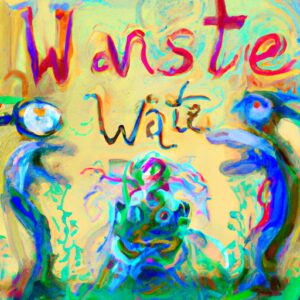(A1) Beginner
- 04/11/2023
Italian grammar quiz for lower-intermediate level. Find your level in 30 simple questions now! Instant results, recommendations to improve, 100% free!
- 03/15/2022
How Many Verb Tenses Do You Need? Italian conjugation tables look intimidating. They show off tenths of tenses, and you feel like you’ll never master them. However, the good news...
- 10/04/2021
What is quando in Italian? Quando is one of the Italian Five Ws (chi, cosa, dove, quando, perché) and is a must-know for Italian students. The meaning of quando can be both when and once,...
- 10/03/2021
What does almeno mean in Italian? In this lesson, we will look at how to say at least in Italian and how to use it correctly within a sentence. Let’s...
- 09/25/2021
What does magari mean? In this lesson, we will not only look at what magari means but also at how to use it correctly in different contexts. Here are some examples...
- 09/14/2021
What does oltre a means in Italian? Today we’re going to learn how to say other than in Italian. Before we go into more detail, let’s understand when we use...
- 09/09/2021
How to say even though in Italian? We all know how useful the expression even though is. And this is exactly why today we will learn how to use it in...
- 09/01/2021
What does apposta mean in Italian? If you want to learn what the Italian word apposta means and how to use it correctly, keep on reading. Firstly, let’s see some...
- 08/09/2021
What is infatti in Italian? Because of the way it sounds, you might think that the Italian wordinfatti will translate to the English “in fact”. However, even if it can sometimes...
- 08/07/2021
What is ormai in Italian? Ormai is an adverb of time, and it can generally be translated into English by now. However, it can take on different shades of meaning...
- 08/03/2021
How to use "appena" in Italian? Learn the grammar with simple rules and examples and practice with audio lessons.
- 07/31/2021
What is ma in Italian? We’re going to learn how to say but in Italian. It’s just a two-letter word: ma. Like in English, we use the equivalent of but...
- 07/29/2021
How to say then in Italian? Explaining what we did in a chronological way is always useful in any language. It helps us organize ideas and events and lets others...
- 07/28/2021
How to say this and that in Italian? In English, there is a difference between saying this book and that book. This book refers to an object closer to you...
- 07/27/2021
What is the conjugation of potere, volere, and dovere? As we saw in a previous lesson about the irregular future tense, we use the future tense to talk about something that will...
- 07/21/2021
What does tranne mean in Italian? When we make exceptions, we are excluding something or someone. In Italian, there’s a similar word to the word exception with exactly the same...
- 07/20/2021
What do allora and quindi mean in Italian? If you’ve been around Italian people or have watched Italian movies, I am sure you heard the words quindi and allora over and...
- 06/20/2021
In Italian, we have different tenses for talking about the past. The most widely used is the passato prossimo, which can be used both as an equivalent of the English...
- 06/14/2021
What is the most difficult aspect of learning Italian? If you’re asking yourself this question, you’re thinking with a negative mindset. Before we go into detail, let us tell you...
- 06/11/2021
How to learn Italian fast? What is the easiest way to learn Italian? How can I speak Italian fluently? What is the best language program to learn Italian? Ask a...
- 06/02/2021
How to use "sia" and "né" in Italian? Learn with these grammar notes! Explanations, examples, rules, sentences, audio lessons.
- 05/16/2021
How to use possessive adjectives and pronouns in Italian? Learn the grammar with simple rules and examples and practice with audio lessons.
- 05/05/2021
Learn the difference between buono, bravo, bello, and bene in Italian. Grammar lesson with simple rules, examples, conjugations, sentences, and exercises.
- 05/05/2021
Learn how to use the irregular passato prossimo (past tense) in Italian. Grammar lesson with simple rules, examples, verb conjugations, sentences and exercises.
- 05/02/2021
What are expressions of time in Italian? If you are studying a foreign language like Italian, you will soon realize how important and useful expressions of time are in everyday...
- 05/01/2021
What are pronouns? Using pronouns correctly is essential if you want to be able to express yourself clearly in Italian; they are some of the most commonly used words, and...
- 04/30/2021
How to say can in Italian? Learn how to use the verb potere in this grammar lesson with rules, conjugations, sentences, examples, and execises.
- 04/27/2021
What are prima and dopo in Italian? One of the first things all students need to learn when studying a foreign language is how to talk about events in time....
- 04/26/2021
How to say what in Italian? What is a word used to start questions. In Italian, there are different ways of saying what using cosa, che cosa, che, and quale,...
- 04/08/2021
Do you know what bella ciao, grazie mille, or arrivederci means? If you have friends that like Italian culture, you may have heard these phrases a thousand times. But what...
- 03/28/2021
Why most Italian words end with vowels? Before we give you a more insightful explanation, let’s review some grammatical rules concerning nouns (things, people, ideas) and adjectives (words describing nouns)....
- 03/21/2021
Can a teenager learn Italian faster? Sometimes we tend to underestimate the skills of children and teenagers. Think of a 5-year-old child. They already know and understand thousands of words...
- 03/12/2021
How to use "proprio" in Italian? Learn the grammar with simple rules and examples and practice with audio lessons.
- 03/11/2021
Learning a language can be tricky. It might be relatively easier or harder for you to learn one language than another. Is Italian more complicated than English? Let’s find out!...
- 03/07/2021
If you’re starting to learn a new language, you may have felt different experiences when studying. In today’s post, we’re going to focus on the pros and cons of learning...
- 02/18/2021
What are the most difficult grammar rules in Italian? Good question! First of all, language learning is very relative and subjective. So, what someone else might find difficult might be...
- 02/12/2021
How to use essere and stare in Italian? Learn the grammar with simple rules and examples and practice with audio lessons.
- 02/07/2021
Italy is often coined as one of the most romantic places in the world. Does it mean Italian is the most beautiful language in the world? Find out what Italians...
- 01/03/2021
What is the meaning of insomma in Italian? Certain words in Italian carry different meanings depending on the context. These words sometimes don’t have exact equivalents in English. But we...
- 12/20/2020
What is an adjective? An adjective might refer to different categories which you’ll find below together with some examples. Usually, when you look up an adjective in a dictionary, you’ll...
- 12/18/2020
What are if clauses? You might be wondering what we’re talking about. Well, an if clause is a phrase that indicates a condition and is usually followed by a phrase that...
- 12/15/2020
What are adverbs of time? Let’s have a look at some sentences and try to spot them. Non ho ancora fatto la spesa. I haven’t done the groceries yet. Loro...
- 12/13/2020
Question words Italian is a very expressive language. This is why we love to use body language and gestures to communicate. Some people say Italians speak as if we were...
- 11/29/2020
Studying Italian for quite some time may urge you to write like a native. There are many styles for informal and formal writing. But, to write like a true Italian,...
- 11/18/2020
What makes a good method of learning a language? To me, a study method is good if it delivers results. Typically, people want to learn Italian to communicate. Thus, progress...
- 09/17/2020
How to use the irregular future tense in Italian? Grammar lesson with simple rules, examples, conjugations, sentences, and exercises.
- 09/16/2020
How to use the regular future tense in Italian? Grammar lesson with simple rules, examples, conjugations, sentences, and exercises.
- 08/30/2020
Learn how to use the pronoun "ci" for places in Italian as in "c'è/ci sono". Grammar lesson with simple rules, examples, conjugations, sentences, and exercises.
- 08/28/2020
Learn how to say there is/are in Italian. Grammar lesson with simple rules, examples, conjugations, sentences, and exercises.
- 08/27/2020
Learn the difference between un po' and poco in Italian. Grammar lesson with simple rules, examples, conjugations, sentences, and exercises.
- 08/27/2020
Learn how to say must in Italian (dovere). Grammar lesson with simple rules, examples, conjugations, sentences, and exercises.
- 08/26/2020
Learn how to say want in Italian (volere). Grammar lesson with simple rules, examples, conjugations, sentences, and exercises.
- 08/24/2020
Sapere vs conoscere. Two Italian verbs that mean "to know". Learn the differences with this grammar lesson. Rules, examples, conjugations, sentences, exercises.
- 08/21/2020
Learn how to say "to need" in Italian: avere bisogno di! Grammar lesson with simple rules, examples, conjugations, Italian to English sentences, and exercises.
- 08/19/2020
Italian grammar lesson on passato prossimo. How to use this past tense? Learn with simple rules, conjugations, examples, sentences, audio, and exercises.
- 05/24/2020
How to use adverbs of place in Italian? Learn the grammar with simple rules and examples and practice with audio lessons.
- 05/23/2020
How to say some in Italian? Learn the grammar with simple rules and examples and practice with audio lessons.
- 05/22/2020
How to use anche in Italian? Learn the grammar with simple rules and examples and practice with audio lessons.
- 05/16/2020
How to use andare a in Italian? Learn the grammar with simple rules and examples and practice with audio lessons.
- 05/15/2020
Italian verb conjugation is the nightmare of every student. I’ll show you how it works and how to learn rules and endings the smart way: by speaking!
- 05/11/2020
Italian grammar quız for beginners. Find your level in 30 easy questions now! Instant results, recommendations to improve, 100% free!
- 05/10/2020
Quick Italian language test for beginners. Find your level in 30 easy questions now! Instant results, recommendations to improve, 100% free!

































































